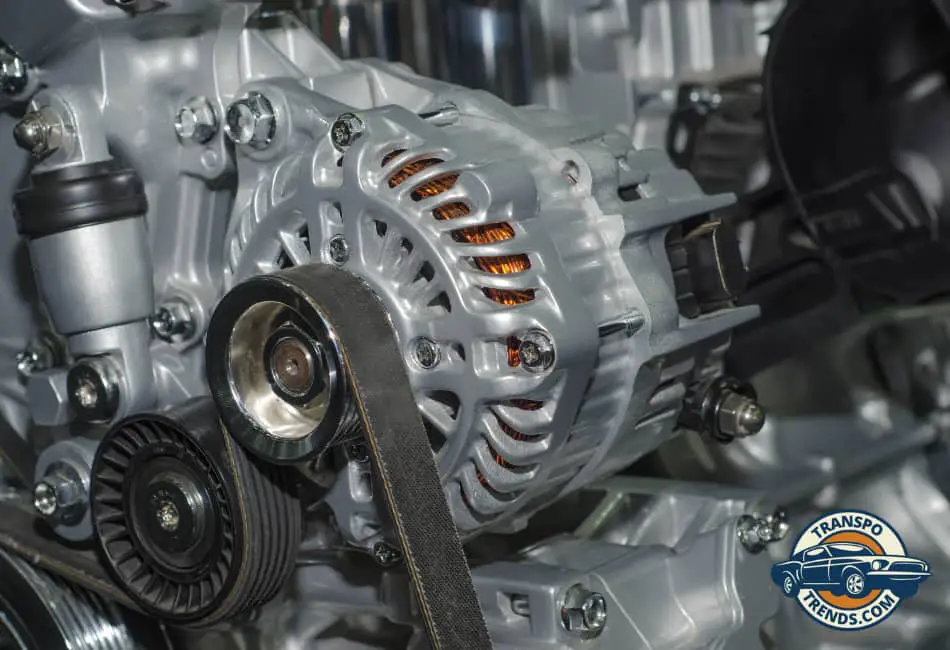An alternator plays a vital role in a car’s electrical system, converting mechanical energy into electrical energy to power accessories and recharge the battery.
This electrical powerhouse sustains your vehicle’s essential operations, from igniting the engine to powering the lights, radio, and more. But what happens if the alternator fails?
Understanding how long a car can run without an alternator is crucial, as it helps car owners strategize during emergencies, prepare for potential risks, and comprehend the long-term consequences.
This understanding also underscores the importance of proactive maintenance and quick response to alternator issues to avoid hazards and costly repairs. Let’s delve into these aspects.
Factors Affecting Duration
Several factors dictate how long a car can run without an alternator. Understanding these will help you better predict your vehicle’s behavior in such scenarios and equip you with the knowledge to mitigate potential risks and damage.
1. Battery Capacity and Charge Level
Your car battery’s capacity and current charge level is the primary determinant of how long you can run your vehicle without an alternator.
A fully charged battery will naturally last longer than a partially charged one. If your battery is fully charged and in good health, you can run your vehicle for 30 minutes to an hour without the alternator.
2. Relationship Between Battery Charge and Runtime
Your car’s duration without an alternator is directly proportional to your battery charge. More the charge, the longer the runtime, and vice versa.
Note that this is a general rule, and actual time may vary based on other factors listed below.
3. Fully Charged vs. Partially Charged Battery
A fully charged battery has more stored energy than a partially charged one, which means it can power your car for a longer time without an alternator. However, regularly draining your battery completely can lead to premature failure.
4. Energy Consumption of Various Vehicle Components
Different car components’ energy usage impacts a car’s runtime without an alternator. Systems like headlights, radio, air conditioning, and other electronic features drain the battery faster.
The less power you consume, the longer your battery will last. Switching off all non-essential electrical components is advisable to conserve battery power.
Remember that running a car without an alternator is always a temporary solution. It’s advisable to get your alternator checked and fixed at the earliest to avoid long-term damage to your vehicle.
Battery Life and Runtime
A car’s battery essentially serves as a reservoir of power for the various electrical components of the vehicle. These components range from the ignition system to the radio and air conditioning.
The battery provides this power by converting chemical energy into electrical energy, which is then utilized by the car’s systems. When your alternator functions properly, it maintains the battery’s charge and helps power these systems.
However, without an alternator, the battery has to shoulder this burden alone until its stored energy is depleted.
The lifespan of a battery in terms of running time without alternator support can vary greatly based on the battery’s overall health, age, and the particular model.
Generally speaking, a healthy, fully charged battery should provide between 5 and 30 minutes of runtime without the support of an alternator.
Typical Runtime Estimates with Different Battery Charge Levels
Fully Charged Battery
With a fully charged battery, you could expect your vehicle to run anywhere from 5 to 30 minutes or perhaps even longer, depending on the specific make and model of the car, as well as the power demands of the various systems.
This estimate, however, assumes that non-essential electrical systems like radios, air conditioners, and headlights are turned off to conserve power.
Partially Charged Battery
When dealing with a partially charged battery, the runtime is significantly shorter. You’re likely looking at a range of between 5 to 15 minutes under the same conditions.
This shorter runtime underscores the importance of maintaining a fully charged battery and the alternator’s crucial role in achieving this.
Getting your alternator fixed promptly is recommended to prevent these issues and ensure the long-term health of your car’s battery.
Dead Battery
Finally, a completely dead battery cannot power your vehicle at all and must be jumpstarted with an external energy source.
This could be another car’s battery or a portable jump starter device.
It is important to note that jumpstarting the engine will not fix any underlying alternator issues, which should still be addressed promptly.
Risks and Considerations
When estimating battery run time, it is important to consider the various risks and considerations.
- Risk of Damage to Electrical Systems: If you continue to drive your vehicle with a faulty alternator or a depleted battery, you risk damaging the electrical systems in your car. This can lead to expensive repairs or replacements.
- Potential for Breakdowns: A car reliant on battery power alone due to a failing alternator is highly likely to break down. This could leave you stranded, potentially in dangerous or inconvenient locations.
- Impaired Vehicle Performance: Reduced power from a failing alternator could lead to suboptimal vehicle performance. This might manifest as dim headlights, slower windscreen wipers, or issues with power-steering, all of which can make driving hazardous.
- Battery Health: Frequently depleting and charging the battery can shorten its lifespan significantly. This is why an alternator in good working condition is essential for maintaining battery health.
- Jumpstarting Risks: Jumpstarting a dead battery should be approached with caution. Doing it incorrectly can cause harm to both you and the vehicle. It’s important to follow the correct procedure and seek help from a professional if unsure.
- Underlying Alternator Issues: Jumpstarting a vehicle with a dead battery will not resolve any underlying alternator issues. If your battery is regularly dying, getting your alternator checked and fixed is crucial.
Long-term Consequences
A car continuously operating without an alternator can result in irreversible damage to the battery and other electrical components. This sustained strain on the electrical system can lead to costly repairs in the future.
Alternatives and Precautions
When facing alternator issues, there are a few alternatives to consider. Jump-starting the car or using a portable battery booster can be helpful.
However, these are temporary solutions and not meant for long-term use. Adopting a proactive approach toward maintenance is crucial to avoid alternator failure.
Relying on a car without a properly functioning alternator for regular driving is strongly advised against.
Conclusion
In summary, running a car without an alternator should only be temporary. The risks, long-term consequences, and potential hazards of this practice underline the necessity of promptly addressing alternator issues.
While temporary solutions can be used in emergencies, they should never replace the need for a fully functioning alternator.
Therefore, ensuring the health of your car’s alternator is essential to enjoy a safe and smooth driving experience.

